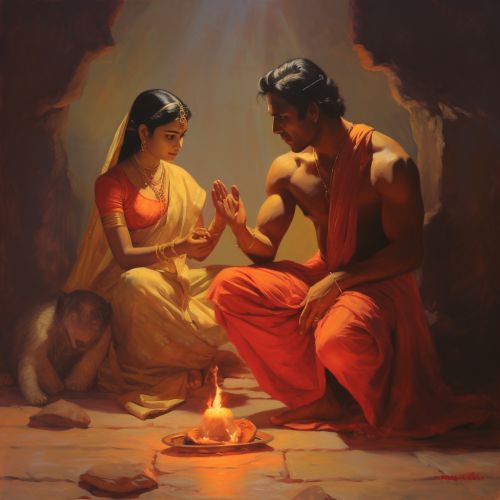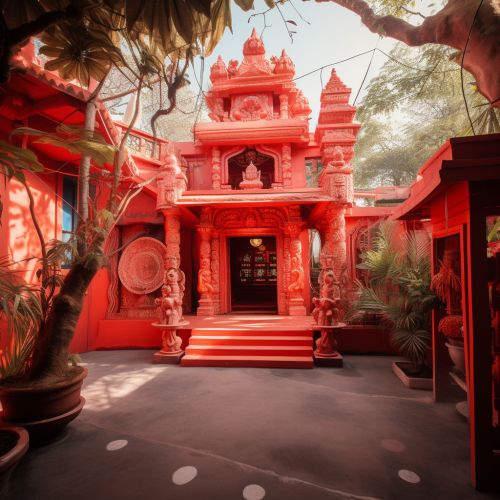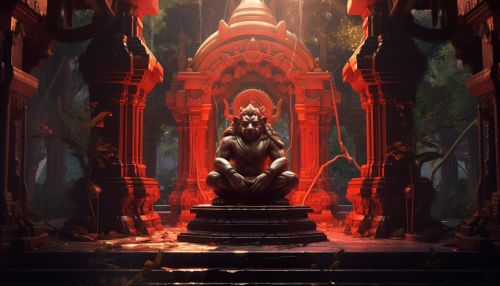Hanuman
Origins and Birth
Hanuman, also known as Anjaneya, is a central character in the Hindu epic Ramayana. He is a vanara, a race of monkey-like humanoids, who played a crucial role in Lord Rama's quest to rescue his wife, Sita, from the demon king Ravana. Hanuman is the son of Anjana and Kesari, and is also described as the son of the wind-god Vayu, who according to several stories, played a role in his birth.


Attributes and Iconography
Hanuman is often depicted as a robust monkey holding a mace (gada) which is a sign of bravery, and having a picture of Lord Rama tattooed on his chest, which is a sign of his devotion to Lord Rama. He is also shown carrying or flying over mountains, signifying his great strength. Hanuman is known for his physical strength, power, and his ability to transform his body to take the smallest or the largest form.
Role in the Ramayana
In the Ramayana, Hanuman is introduced as a minister of Sugriva, the king of Vanaras in Kishkindha. He plays a vital role in locating Sita, who was kidnapped by Ravana. His search for Sita brings him to Lanka, where he wreaks havoc and sets the city on fire before returning to Rama with the news of Sita's whereabouts. During the war between Rama and Ravana, Hanuman played a crucial role in Rama's victory.
Worship and Temples
Hanuman is one of the most popular deities in Hinduism and is worshipped for his strength, agility, and valor. The Hanuman Chalisa, a 40-verse hymn in praise of Hanuman, is recited by millions of Hindus every day. Hanuman temples are found all across India and he is also a popular deity in Southeast Asia and other regions where Hinduism is practiced.


Influence on Culture and Art
Hanuman's tales have had a profound influence on Indian culture and have been depicted in various forms of art, including music, dance, theater, and literature. He is a popular character in the traditional performances of the Ramayana, such as Ramlila. Hanuman is also a popular theme in Indian art and architecture and his image and story have been a source of courage and strength for people.
